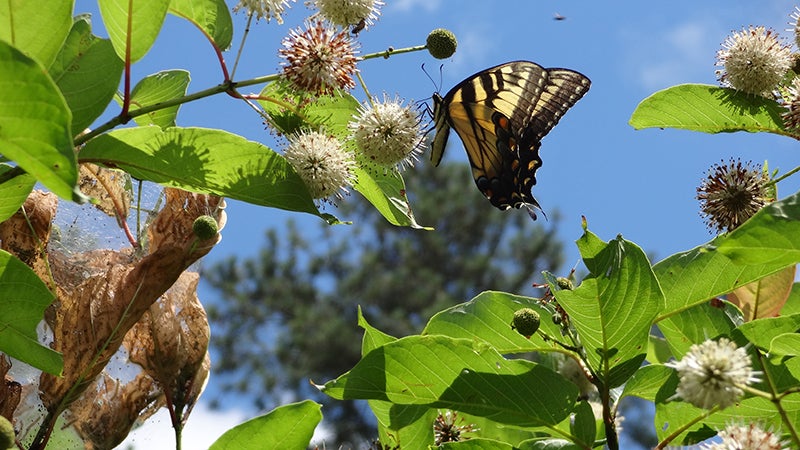Buttonbush native of every county in Virginia
Published 2:50 pm Monday, December 10, 2018

- The flowers of Buttonbush (Cephalanthus occidentalis) are a nector source for two species of sphinx moths and are attractive to many species of bees, birds and butterflies. This image was taken at the Williamsburg Botanical Garden.
|
Getting your Trinity Audio player ready...
|
Buttonbush
Cephalanthus occidentalis
Buttonbush has unusual, long-lasting blossoms that are well-named — they resemble pincushions followed by button-like balls of fruit. The one-inch flowers are in dense clusters, white or pale-pink, with a fringe of pistils protruding beyond the white petals. Subsequent rounded masses of nutlets persist through the winter. Buttonbush is a much-branched, native shrub which grows 6-12 feet, or occasionally taller. Glossy, dark-green leaves are in pairs or in threes, on stalks, with narrow, oval blades up to 8 inches long. The tips are pointed, and the edges are smooth.
This shrub or small tree grows in moist, humus soils in full sun to part shade, in swamps, thickets and stream/pond margins. Native to every county in the state of Virginia, the plant ranges from Nova Scotia, New Brunswick and Quebec to Minnesota, south to Mexico and the West Indies. The flowers appear from June through August.
The flowers are a nectar source for two species of sphinx moths and are attractive to many species of bees, birds and butterflies. Ducks and other water birds and shorebirds consume the seeds. The poisonous foliage of this species is unpalatable to livestock. While the bitter bark has been used in home remedies, its medicinal value is doubtful.
Cephalanthus comes from the Greek cephale for “head” and authos for “a flower.” The species name occidentalis is Latin for “western.”
HELEN HAMILTON is past president of the John Clayton Chapter, Virginia Native Plant Society. Contact her at helen48@cox.net. For more information about native plants, visit www.vnps.org.



